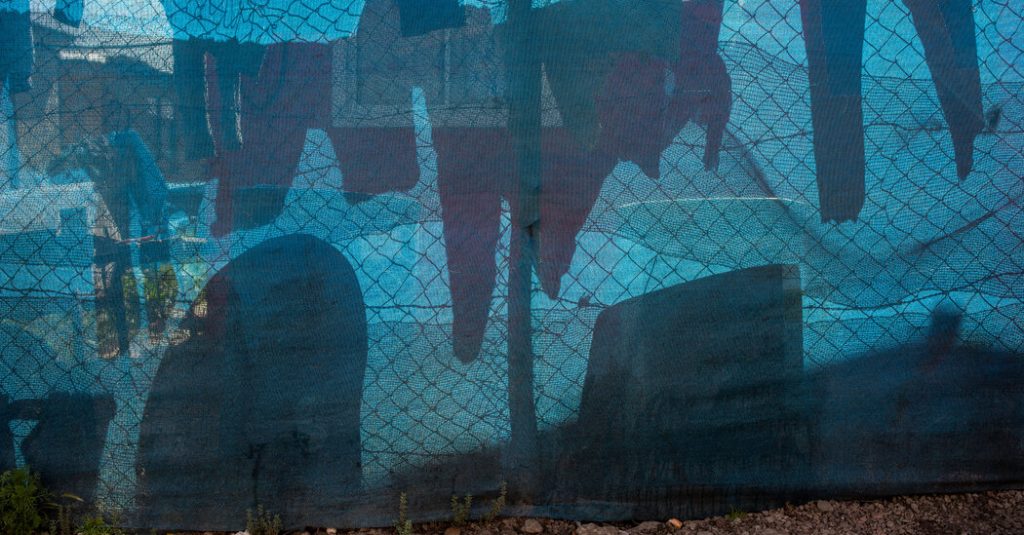Why do Haitians leave Chile for the United States?

Santiago de Chile – Since moving to Chile in 2013, Fallon, a Haitian woman, has been making a living and working as a hairdresser in a small town north of the capital.
But in May, he and his two children, 20 family members and friends, embarked on a perilous journey of more than 7,560 kilometers to the United States. He risked everything and hoped for the best.
“Things have become very difficult for immigrants in Chile,” said Falloni, who did not want his last name published for fear that it would jeopardize his chances of immigrating in the United States. “They tell us: Go to your country, they are a scourge.”
Of the thousands of Haitians who have recently arrived at the southern border of the United States, many, like Fallonie, have come from Chile. Over the past decade, as Haitians took refuge from the devastating 2010 earthquake, Chile, with its generous income policy and stable economy, has become an attractive destination for them.
Things changed quickly with the election of two new presidents.
In Chile, immigrants faced new restrictions, while in the United States, Joe Biden’s government offered new protections to Haitian immigrants already there. Many Haitians in Chile mistook these actions as an opening and made the arduous journey north to the border, only to be forcibly returned to Haiti, sometimes in shackles.
“They sold us the ‘Chilean dream,'” said Steve Azur, 28, who immigrated from Haiti to Chile in 2014. “Everyone thought Biden would have more flexible immigration policies.”
Those who came to the frontier community of Del Rio, Texas – after spending months on the road – knew right away that they were wrong. The United States received very few people, and created scenes of misery and despair.
When some attempted to cross the Rio Grande, they were violently repelled by US Border Patrol agents on horseback. Thousands more gathered under the bridge, and many returned to the place where it all began: Haiti, a torn country where crises intertwine.
However, many Haitians continue to travel from Chile, unaware of what awaits them at the US border or willing to take risks.
This is partly because life is getting tougher for immigrants in Chile.
According to government figures, as of December, there were more than 182,000 Haitians living in Chile. This does not include undocumented immigrants, who are invisible to the government and therefore vulnerable to “abuse at work and housing,” said Alvaro Pelolio, director of Chile’s National Migration Service.
It has always been difficult to get work and housing, but they have become even scarcer during the pandemic. Many Haitians were left destitute. Some rooms are rented out in crowded, dilapidated homes. Others became squatters. Lots of street vendors work.
“I did research on Chile before I came,” said Azure, who immigrated from Haiti. “And I never imagined I’d be renting an expensive room and sharing a bathroom with 20 other people.”
Event Dorsenville, 34, a professor and spokesperson for a Haitian organization in Chile, moved to Santiago in 2010 after obtaining a student visa and a place on a graduate program. When he moved, Chile was emerging from the global financial crisis and there were many job opportunities for immigrants.
But, over the years, that has changed. The immigrants were accused of taking jobs from Chileans and putting pressure on social services.
The country has also received hundreds of thousands of Venezuelans fleeing the appalling conditions in that country. As the numbers of Haitian immigrants swelled in 2017 and 2018, Dorsenville said, many in Chile, which is predominantly white, began treating them with particular contempt.
He said some Haitians have been clear about the risks of trying to enter the United States. “There are people who sell their few things and give up their children,” Dorsenville said. “They say they would rather die than humiliate themselves here.”
Willska Orita, director of the Jesuit Immigrant Service, said Chile could have done more to achieve Haitian integration.
“This is a failed merger experiment,” said Yoretta. “In Chile, Haitians face cultural and social discrimination, including at the governmental level, in their workplaces and on the streets.”
By the time his group arrived by bus in Darien Gap, a 160-kilometre stretch of swamp and mountainous bush along Colombia’s border with Panama, the group had grown to about 100 people, including Haitians from Brazil.
On that dangerous journey, they had to drop their bags and pack their luggage and basic food into their backpacks. Colombian smugglers picked them up with dollars to drive them on foot to the border with Panama, a week-long transit trip along perilous trails.
“A lot of people have died in accidents on this road, and it’s a very slippery road because of the rain,” Valoni said. It was a very difficult and dangerous experience.”
In Panama, he heard stories of immigrants being robbed and raped.
Fallon left Chile in May. In early August, she and her group crossed the border into Texas and entered the United States, where they hope to gain asylum.
Haitians say the process of obtaining legal residency in Chile has become more difficult under President Sebastian Pinera, who took office in March 2018. Between January and July this year, only seven percent of government-issued permanent residence permits went to the Haitian community. , up from 20 percent last year.
The government says residence permits are processed on a first-come-first-served basis. With the massive exodus of people fleeing the collapsing Venezuelan economy, most permits are granted to people from this country.
Azores said Haitians, however, see this decline as a clear sign that they are not wanted.
His 26-year-old brother Gregorio has been trying for six years to find a stable job in Chile in order to apply for legal residence. In June, he surrendered and left for the United States.
“He pressured us to leave,” Azure said.

“Future teen idol. Hardcore twitter trailblazer. Infuriatingly humble travel evangelist.”










